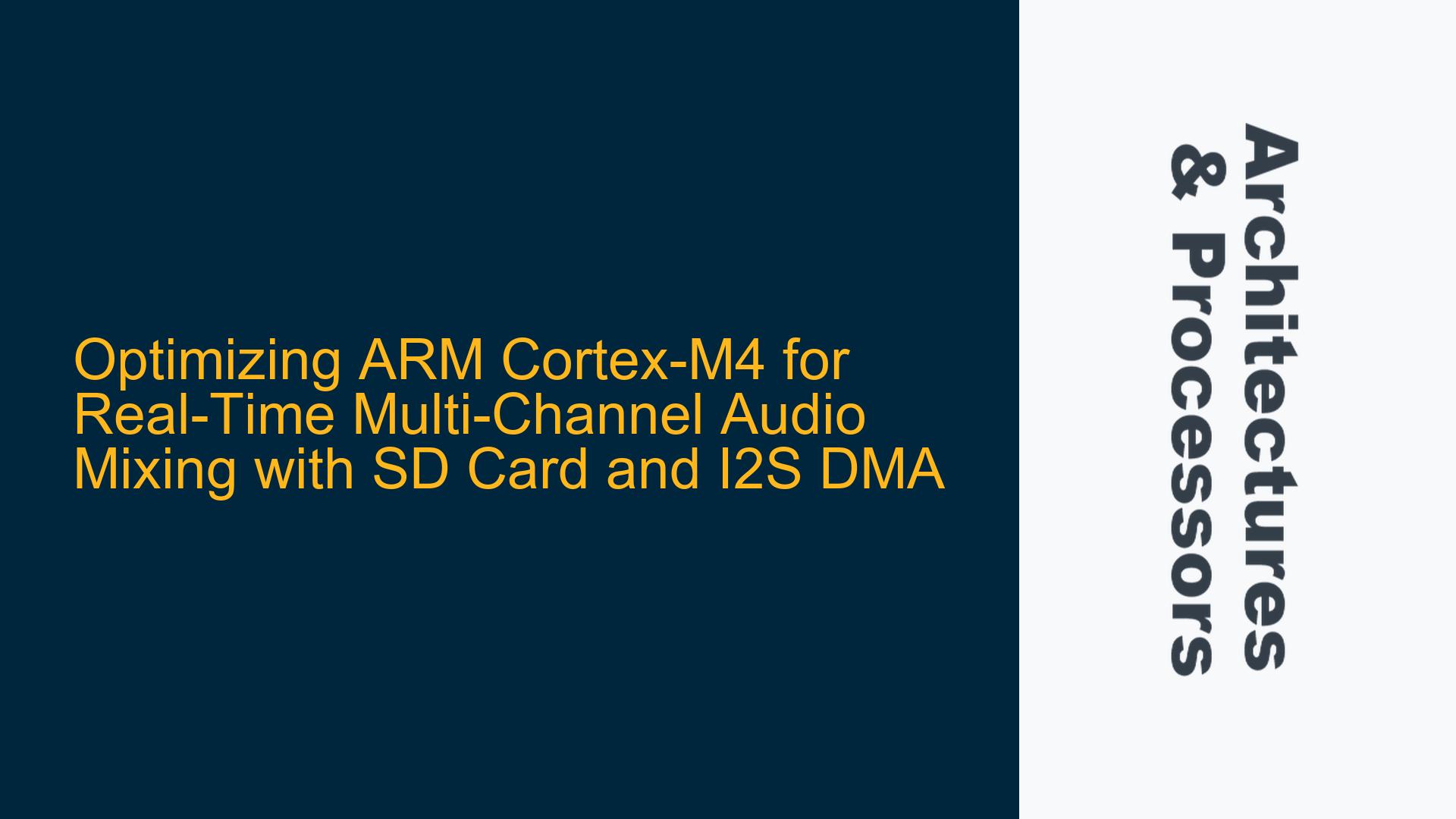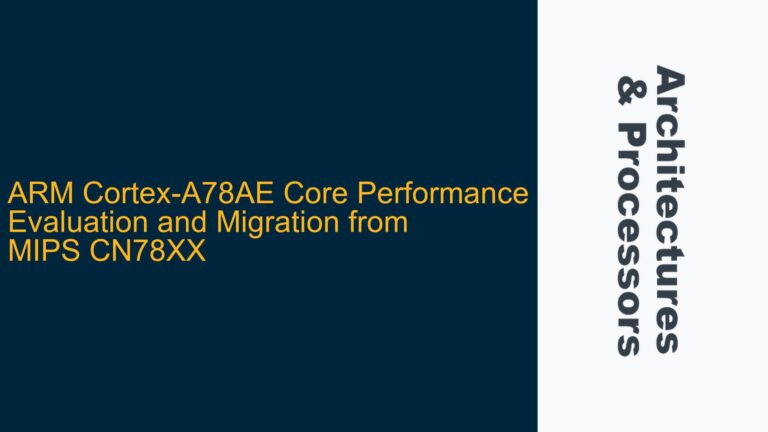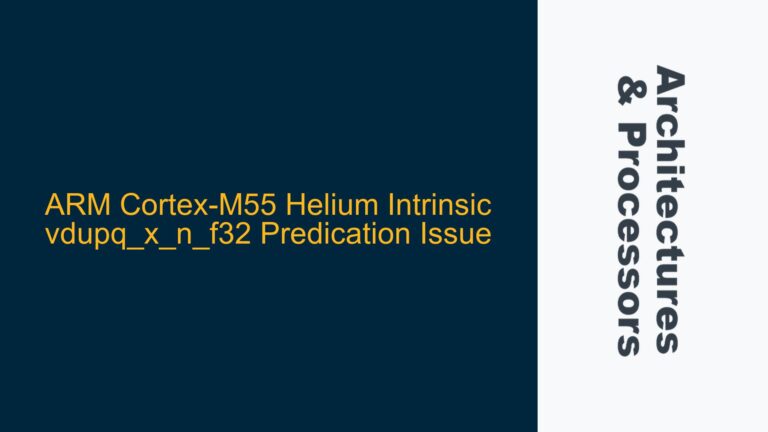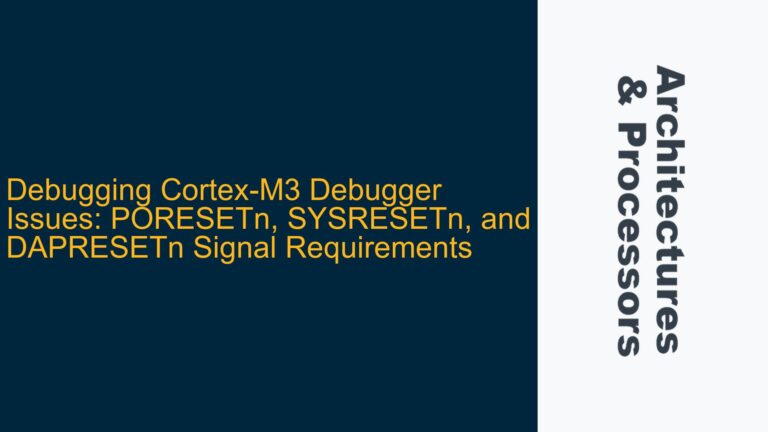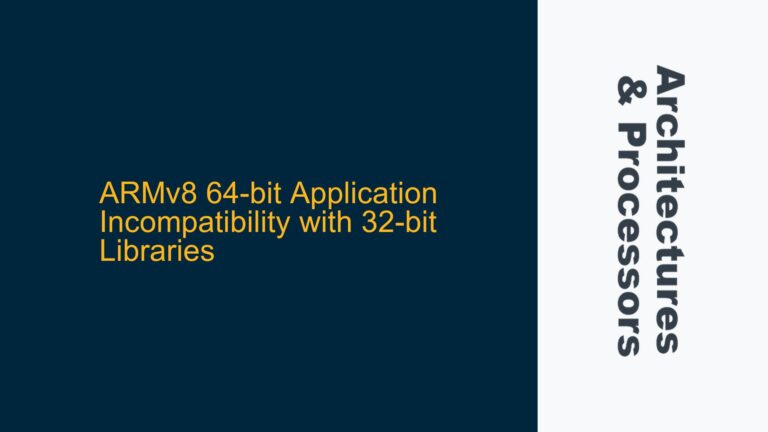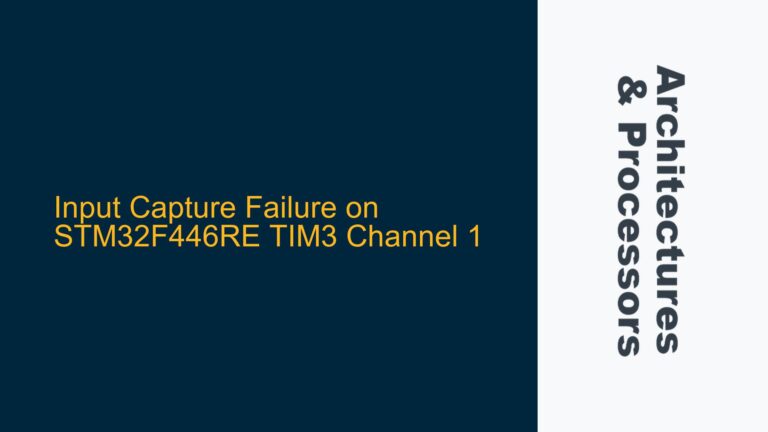ARM Cortex-M4 Audio Mixing Performance with SD Card and I2S DMA
The ARM Cortex-M4 processor, particularly in the STM32F429IGT6 microcontroller, is a popular choice for embedded audio applications due to its balance of performance, power efficiency, and peripheral support. However, achieving efficient real-time multi-channel audio mixing with hard latency requirements (less than 50ms) presents several challenges. These challenges include managing SD card read latencies, optimizing audio mixing algorithms, and ensuring seamless DMA-driven I2S streaming. The Cortex-M4’s capabilities, including its DSP extensions and single-cycle multiply-accumulate (MAC) operations, make it suitable for such tasks, but careful design and optimization are required to meet the stringent real-time constraints.
The primary task involves mixing up to four channels of 24-bit, 44.1kHz audio data fetched from an SD card via QSPI and streaming the mixed output to an I2S peripheral using DMA. The dynamic nature of the audio mixing, where additional audio tracks can be triggered at random intervals, adds complexity to the system. The key performance bottlenecks include SD card read latency, SRAM buffer management, and the computational load of mixing multiple high-resolution audio streams in real time.
SD Card Read Latency and SRAM Buffer Sizing
One of the most critical aspects of this system is managing SD card read latency. The SD card interface, even with QSPI for high-speed data transfer, can introduce unpredictable delays due to factors such as file system overhead, fragmentation, and card-specific performance characteristics. For a 24-bit, 44.1kHz audio stream, each channel requires 132,300 bytes per second (44,100 samples/second * 3 bytes/sample). For four channels, this translates to 529,200 bytes per second. If the SD card stalls for even 500ms, the system must buffer at least 264,600 bytes of data to prevent audio dropouts.
The STM32F429IGT6 microcontroller features 256KB of SRAM, which is insufficient to buffer 500ms of four-channel audio data. To address this, a combination of strategies can be employed. First, the system can use double buffering with smaller buffers to overlap SD card reads with audio processing. For example, two 64KB buffers per channel can be used, allowing one buffer to be filled while the other is being processed. This reduces the required SRAM to 512KB (64KB * 2 buffers * 4 channels), which is still beyond the microcontroller’s capacity. Therefore, external SRAM or SDRAM must be used to supplement the internal memory.
Another approach is to optimize the SD card read operations by minimizing file system overhead. Using a raw data format instead of FAT32 can eliminate fragmentation and reduce seek times. Additionally, pre-fetching audio data during idle periods can help mitigate latency spikes. However, these optimizations must be balanced against the increased complexity of managing raw data and the potential for increased power consumption.
Audio Mixing Algorithms and Computational Load
The audio mixing process involves combining multiple audio streams into a single output stream. For four channels of 24-bit audio, this requires four multiply-accumulate (MAC) operations per sample. The Cortex-M4’s DSP extensions, including the single-cycle MAC instruction, make it well-suited for this task. However, the computational load increases significantly when mixing multiple tracks dynamically.
A typical audio mixing algorithm scales each input channel by a gain factor and sums the results to produce the output sample. For four channels, this can be expressed as:
[
\text{Output} = (\text{Channel}_1 \times \text{Gain}_1) + (\text{Channel}_2 \times \text{Gain}_2) + (\text{Channel}_3 \times \text{Gain}_3) + (\text{Channel}_4 \times \text{Gain}_4)
]
This operation must be performed for each of the 44,100 samples per second, resulting in 176,400 MAC operations per second for four channels. While the Cortex-M4 can handle this load, additional optimizations can improve performance. For example, using fixed-point arithmetic instead of floating-point can reduce processing time, as the Cortex-M4 lacks a hardware floating-point unit (FPU). Fixed-point arithmetic also reduces memory bandwidth requirements, which is critical when working with limited SRAM.
Another optimization is to use SIMD (Single Instruction, Multiple Data) techniques to process multiple samples in parallel. The Cortex-M4’s DSP instructions support SIMD operations, allowing two 16-bit samples to be processed simultaneously. This can effectively double the throughput of the mixing algorithm, reducing the processing time per sample.
Implementing DMA-Driven I2S Streaming with Data Synchronization
The final stage of the audio processing pipeline is streaming the mixed audio data to the I2S peripheral using DMA. The I2S interface requires a continuous stream of audio data to avoid glitches or dropouts. DMA is essential for offloading this task from the CPU, allowing it to focus on audio mixing and other real-time tasks.
The STM32F429IGT6 microcontroller features multiple DMA channels, which can be configured to transfer data from memory to the I2S peripheral. However, managing DMA transfers in a real-time system requires careful synchronization to ensure that data is available when needed. One common issue is DMA underrun, where the DMA engine runs out of data to transfer, resulting in audio artifacts.
To prevent DMA underrun, the system must ensure that the audio mixing process completes before the DMA transfer begins. This can be achieved using double buffering, where one buffer is filled with mixed audio data while the other is being transferred by DMA. The Cortex-M4’s DMA controller supports circular buffer mode, which automatically wraps around to the beginning of the buffer when the end is reached. This simplifies buffer management and ensures continuous data flow.
Another consideration is data alignment and padding. The I2S peripheral typically expects audio data to be aligned to specific boundaries (e.g., 32-bit words). If the mixed audio data is not properly aligned, the DMA transfer may fail or produce incorrect results. To address this, the audio mixing algorithm should ensure that the output buffer is aligned to the required boundary. Additionally, padding can be added to the buffer to ensure that its size is a multiple of the DMA transfer size.
Summary of Key Strategies
To summarize, the following strategies are essential for optimizing the ARM Cortex-M4 for real-time multi-channel audio mixing with SD card and I2S DMA:
-
SD Card Read Latency Management: Use double buffering with external SRAM or SDRAM to handle SD card read latency. Optimize SD card read operations by minimizing file system overhead and pre-fetching data during idle periods.
-
Audio Mixing Algorithm Optimization: Use fixed-point arithmetic and SIMD techniques to reduce computational load and memory bandwidth requirements. Ensure that the mixing algorithm is efficient and can handle dynamic track additions.
-
DMA-Driven I2S Streaming: Implement double buffering and circular buffer mode to prevent DMA underrun. Ensure proper data alignment and padding to meet I2S peripheral requirements.
By carefully addressing these challenges, the ARM Cortex-M4 can be effectively utilized for real-time multi-channel audio mixing applications, even with hard latency requirements. The key is to balance performance, memory usage, and system complexity to achieve a robust and efficient implementation.
